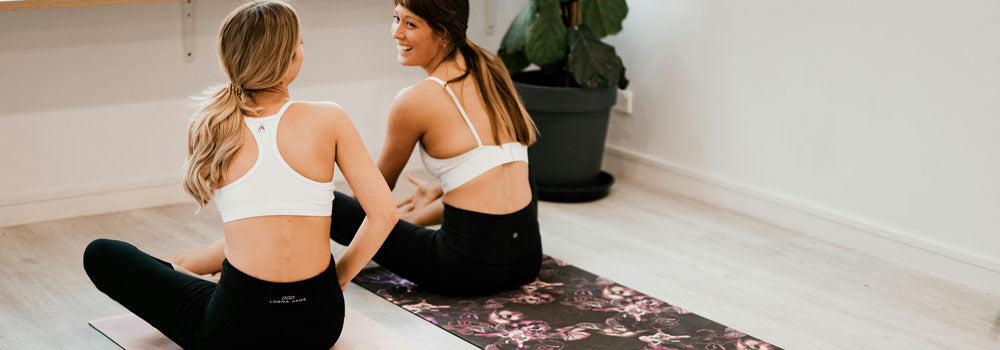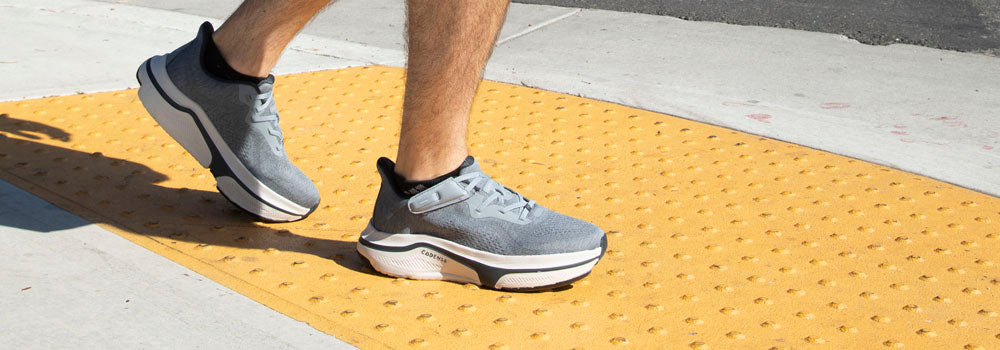MS Exercises to Improve Walking and Balance
Mar 15, 2024
Multiple sclerosis makes walking difficult, and nearly impossible to have a normal natural looking gait.
But exercising has a host of benefits if you have MS.
In this post, we will introduce you to MS exercises to improve walking and balance. Over time, you should find walking easier, and the increased exercise you get will hopefully help to alleviate some of your symptoms while maintaining your overall wellness.
Overview of MS and its Effects on Walking
According to a journal article in Temperature, MS can result in numbness, tingling and pain in around 50% of patients. These symptoms affect the extremities, back, and/or head in 65% of patients. That means that you may experience these symptoms in your feet. These sensory alterations may make it difficult to fully lift your feet when walking, resulting in MS-related foot drop.
MS is usually diagnosed between the ages of 20 to 40. So, it may lead to difficulties walking among young, middle aged and older adults.
Benefits of Exercise for Sufferers of MS
As difficult as it can be to exercise when you have MS, putting in the effort to make it happen can pay off. Let’s go over some of the benefits of exercising for patients with MS.
Raise Energy Levels
According to WebMD, exercising with MS can help to combat the fatigue that can accompany this condition. It may seem counterintuitive that working out could increase your energy levels, but many patients report exactly that effect.
Improve Heart Health
This study reports that “appropriate exercise” can lead to improvements in cardiovascular wellness. To be specific, “appropriate exercise” in this case means low to moderate intensity aerobic training.
Boost Bone Strength
The study linked above mentions how MS patients may be more prone to osteoporosis and fractures due to inactivity and corticosteroid use. Resistance training may help to improve or maintain bone mass and muscle strength.
Better Lung Function
Patients with MS may suffer from lung function deficiencies. Getting regular exercise can improve lung health and function.
Top MS-Friendly Walking Exercises
Now that you understand how exercise can help you feel and function better with MS, it is time to learn about some simple MS exercises to improve walking.
Low-Impact Aerobics
Low to moderate intensity aerobic training is recommended for patients with MS.

Walking itself is an excellent example of a low-impact aerobic exercise that can be beneficial to patients with MS. The more you practice walking, the more you will be able to improve your gait.
Other examples of suitable low-impact aerobic exercises include cycling, swimming, rowing, using an elliptical, and dancing. You may think of others as well. These are all activities that should not be too jarring on the joints.
The resistance offered by water for aquatic activities can also help you build and maintain your muscles.
Whatever activities you choose, remember to start out slowly, increasing intensity only when you are sure you can handle it.
Strength Training
Resistance training can help you to strengthen muscles and bones.
The Multiple Sclerosis Foundation says that if you plan to try out resistance training, you should be careful not to overdo it. Try exercises where you use the weight of your own body for resistance, or light equipment.
People with MS may be especially prone to injuries during resistance training exercises if they are not careful to check their posture and alignment. Check your alignment before you begin exercising, and be mindful of it throughout your strength training workouts.
Yoga Poses
According to the National Multiple Sclerosis Society, doing yoga when you have MS can help you to stand or walk more safely by improving your balance, alignment and strength. In addition, yoga’s relaxing nature may offer mental wellness benefits.

Consult a Physical Therapist
In a pilot study of the effects of physical therapy as an early intervention in MS, researchers discovered improvements in the areas of lower limb strength, walking coordination, upper limb dexterity, and concentration.
Seeing a physical therapist also gives you a chance to consult with a professional about your individual situation. MS can present very differently from person to person, resulting in unique challenges. Your physical therapist can work with you to create a custom plan to help you get more exercise and improve your gait.
FAQs
Let’s answer a few frequently asked questions about walking with MS.
Can walking exercises help manage symptoms of MS?
Yes, walking exercises can help manage symptoms of MS. Previously, we referenced WebMD while explaining how exercising can help to reduce fatigue. It also can help manage bowel and bladder symptoms.

The benefits of walking exercises for MS management are not just for creating long-term, overarching improvements either; you can also experience a degree of acute relief for mood symptoms just by engaging in moderate-intensity exercise like fast walking for 20 minutes.
If the numbness, pain, or foot drop associated with MS is making walking difficult, just making the switch to specialized footwear developed by experts in gait disorders can help.

Take a look at the Cadense Original Adaptive Shoes for men and women. This unique shoe features variable friction technology. As you walk, the shoe adapts to the surfaces you are crossing, helping you “glide” over obstacles even if you cannot fully lift your feet.
While this is the primary feature that makes the Cadense Original Adaptive Shoe exceptional, it is not the only one. Here are a few others that make this shoe suitable for patients with MS:
- The shoe is designed to be easy to take off and put back on.
- This shoe offers snug, firm support, but is not too tight.
- The lightweight design and materials do not fatigue you, allowing you to walk farther and longer.
- Cushioning makes the Original Adaptive Shoe comfortable to wear. But the shoe has enough depth to fit an insert if you want additional padding.
- The stylish design of the shoe ensures that it will complement your wardrobe, and be something you can express yourself wearing. In fact, you can choose from a variety of colors to suit your personality.
The comfort and stability the Original Adaptive Shoe provides can encourage you to get out and do more walking and other types of exercise. By helping to keep your feet and ankles aligned and supported, stabilizing your gait, and assisting you with crossing uneven surfaces, these shoes reduce your chances of falls and injuries while making walking more enjoyable.
To discover our full range of products, view the complete collection of Cadense shoes for MS.
Are there recommended warm-up routines for people with MS?
MS Society suggests warming up with gentle stretches. If you are going to do aerobic exercise, start out with the same activity at a slower, gentler pace, and then increase the intensity when you are ready. Remember to cool down when you are done as well, dropping from a high intensity back to a lower intensity before you stop.
Can people with MS ever learn to walk again?
Yes. The National Multiple Sclerosis Society states that many patients ask this question when they trip and fall often with MS. The society says that improvements are possible.

